In 2025, if you want to witness some incredible spectacles in the French sky, you'll have to be prepared to sacrifice a little sleep! Usually, you have to wake up in the middle of the night to get the most out of shooting star showers or Super Moons. And this year, amateur astronomers are in for a treat, with a partial solar eclipse and two total lunar eclipses, as well as a host of celestial phenomena!
With the naked eye or a telescope, if the sky is cloudless, get ready to look up at the stars! Get out your calendar and take note of the events you won't want to miss! Let's hope for beautiful evenings without too many clouds or too much rain to enjoy them, and why not, some new aurora borealis, as our favorite star enters the period of solar maximum?
On January 16, Mars is at its closest to the Earth, in opposition, so conditions are excellent for observing it with the naked eye, which won't happen again for another 25 months or so. In addition, from now until the end of February, you'll be able to see an arc of aligned planets after sunset.



 Astronomy: a rare alignment of planets visible to the naked eye in the sky in January and February
Astronomy: a rare alignment of planets visible to the naked eye in the sky in January and February
The year 2025 is full of surprises in the sky, with its share of eclipses and shooting stars! But on January 21 and February 28, six to seven planets in our solar system will be aligned and visible from Earth! [Read more]
Here's a month to delight Sunday astronomers, as two eclipses await us in Europe! On Saturday March 29, a partial solar eclipse will pass over parts of eastern Canada, France and northern Europe, while the totallunar eclipse will take place on the night of March 13 to 14, with a reddish star, as the Earth partially prevents sunlight from illuminating the Moon.
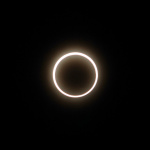


 Partial solar eclipse: how to observe this incredible phenomenon this weekend?
Partial solar eclipse: how to observe this incredible phenomenon this weekend?
On March 29, 2025, a partial solar eclipse will be visible from Europe, with part of the Sun occulted by the Moon. How can you safely observe this incredible phenomenon? [Read more]
You'll never be able to keep your wits about you, not even when it comes to watching the famous Lyrid shooting stars, which light up the sky every year around the 21st of the month!

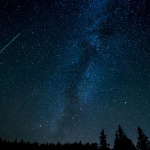

 Lyrides: a shower of shooting stars visible in the sky in April
Lyrides: a shower of shooting stars visible in the sky in April
From April 14 to 30, 2025, a shower of shooting stars will be visible in the French sky. These are the Lyrides, meteors that pass through our atmosphere every year. Let's look up and admire the show! [Read more]
May is no exception when it comes to shooting stars! The peak of the Êta aquarides meteor shower is expected around May 5. The radiant will be located near the constellation Aquarius, from which 10 to 20 shooting stars per hour seem to emerge in our hemisphere. These meteors come from the debris of the famous comet Halley. To observe them, move away from the city lights to a high spot!
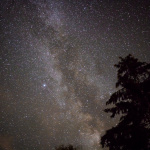


 Êta Aquarides: a shower of shooting stars visible in the sky in May
Êta Aquarides: a shower of shooting stars visible in the sky in May
From April 19 to May 28, 2025, a shower of shooting stars will be visible in the French sky. These are the Êta Aquarides, meteors that pass through our atmosphere every year. Look up to the sky and admire the show! [Read more]
The Perseids are the most famous shooting star showers, because they are the most active. From July 16 to August 23, you can watch these meteors every night, with a peak of activity on the night of August 12, when almost 100 shooting stars can be observed per hour! A spectacle not to be missed!
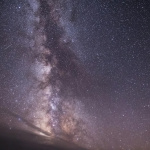


 The Perseids, the most beautiful shooting star shower of the year, return in August
The Perseids, the most beautiful shooting star shower of the year, return in August
Throughout August, and especially on August 11, 2025, the famous Perseid shower of shooting stars will be visible in the French sky, as it is every year. Let's look up and admire the show! [Read more]
Incredible but true: a second Blood Moon in 2025! On September 7, another total lunar eclipse is on the way, this time at the end of the day, around 7.30pm.



 Astronomy: two total lunar eclipses in 2025, when can you see these Blood Moons?
Astronomy: two total lunar eclipses in 2025, when can you see these Blood Moons?
Three eclipses await us this year, including two total lunar eclipses on March 14 and September 7, 2025! A spectacle that many budding astronomers will be able to observe, as the star takes on a beautiful reddish hue. [Read more]
Two rows of shooting stars grace our sky in October and November: the Orionids and the Leonids, which follow one another. The Orionids peak on October 20, with almost 20 meteors per hour from comet Halley, while the Leonids, particularly fast and colorful, are most numerous on November 17, but still less numerous.
Two Supermoons will also take place in the last quarter of 2025, on October 7 and November 5, as well as one in December, on the 4th, while Saturn will lose its rings on November 8, as the planet appears on its edge, which happens every 15 years. This time, however, you'll have to get out the telescope to have a chance of observing it!



 Orionids: dates for admiring this autumnal shower of shooting stars
Orionids: dates for admiring this autumnal shower of shooting stars
In October, a shower of shooting stars can be seen in the French sky. These are the Orionids, meteors that pass through the Orion constellation every year. If the weather doesn't bother us, we can look up and admire the spectacle! [Read more]



 Leonids: everything you need to know about this small shower of colourful shooting stars in November
Leonids: everything you need to know about this small shower of colourful shooting stars in November
Shooting stars are back in our skies, with the Leonids! The peak is expected on the night of November 17, 2025, from midnight onwards, with bright, colorful meteors. [Read more]
The Geminids are the most famous shooting star showers after the Perseids, as they are among the most active of the year. From December 7 to 17, you can watch these meteors every night, with a peak of activity on the night of December 13, with almost 60 shooting stars per hour! An incredible spectacle not to be missed, weather permitting!
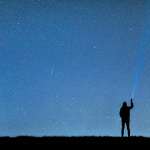


 Geminids: a beautiful shower of shooting stars to be seen in the sky in December
Geminids: a beautiful shower of shooting stars to be seen in the sky in December
A shower of shooting stars will be visible in the French skies before Christmas on the nights of December 4 to 20, 2025, peaking on the 13th. Get ready to admire the beauty of this starry sky! [Read more]















